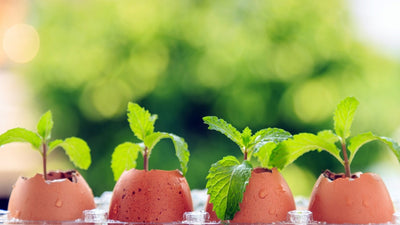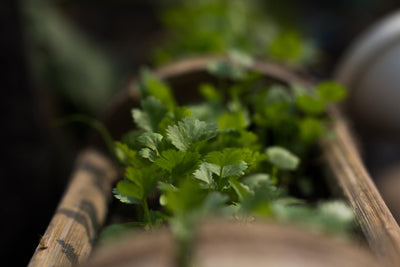
Smart Tips for Your Summer Garden
Turning on the hose may be the easiest method for watering outdoor plants, but there are plenty of ways to conserve water by reusing it. Our suggestion: put household water to work by directing it into the garden, not down the drain.
Why worry about using so much water in the first place? If you’re in a drought-prone area, every drop of water saved goes a long way towards keeping the taps running. But no matter where you live, reusing water helps reduce your environmental impact (and not to mention your monthly water bill). Get started by trying these water recycling methods in and out of your home.
How to recycle water in the home
There’s no need to reach for the tap to fill your watering can. Instead, set up a lidded plastic storage bin or a plain old bucket in a convenient location—for example, outside your back door or in the bathroom—to store the water until you're ready to use it. As you clean, shower, wring out your washcloth, or brush your teeth, collect the excess water in this tub or bucket for later use in your garden.
The kitchen is another great place to collect excess water for your garden. Having pasta for dinner? Rather than dumping the water in the sink, wait for it to cool down, then add it to your watering can. When washing your fruits and vegetables, place a bowl in the sink to catch the excess water. Changing your pet's water? Instead of emptying the bowl down the drain, save any water that's left.
Water that is recycled this way is called greywater: gently used water that may contain traces of dirt, food, grease, hair, and some mild household cleaning products. You can water your garden with greywater at any time, even if it does not coincide with your local water district’s watering schedule. To be even smarter about what water you’re using for what, you can set up and label two storage bins—one to water edible plants and one to water ornamental plants. Don’t let greywater sit for more than 24 hours, however, because bacteria can develop. Put it to use in your garden as quickly as possible.
How to recycle water outside the home
In addition to reusing water from indoors, you can salvage water from outside your home. If you have a roof gutter system, simply placing a rain barrel under your downspout will allow you to save all the rainwater that would otherwise get away, leaving you with plenty to use for gardening.
If you're like most people, you probably have a small collection of half-empty water bottles in your car or on your desk at work. Gather them up and use the leftover water for your garden or office plants!
A quick word to the wise when collecting water both in and outside your home: avoid blackwater completely. Blackwater is defined as any water that has come into contact with feces, either from the toilet or diapers. It can carry pathogens and should never be recycled at home or used in your garden.
Quick tips for watering your garden
- Using a watering can instead of a hose goes a long way
- Only water plants when they need it
- Water early in the morning
- Water at the plant’s base
Though salvaging water in and outside the home might add a few extra steps to your daily routine, the benefits you will see in your garden will far outweigh the effort you put into recycling that water. Once you establish the habit of saving, a few buckets here and there will add up to many gallons of water saved.
Now who's ready for an egg hash with veggies fresh from the garden?











